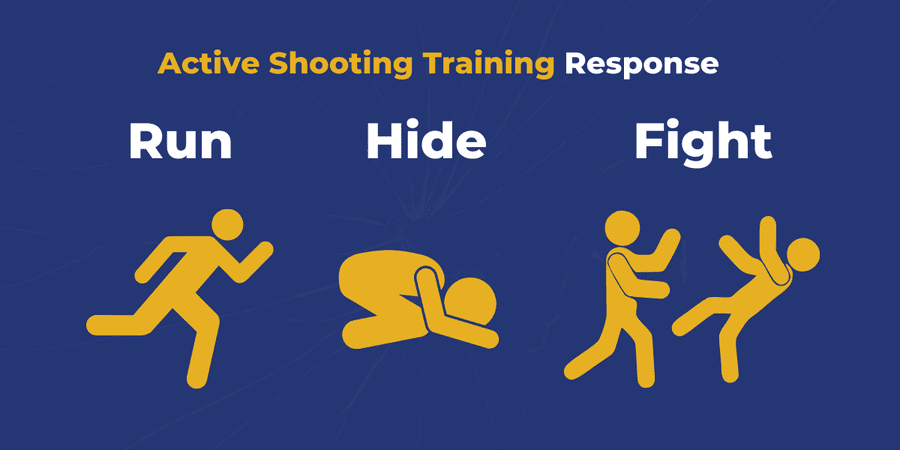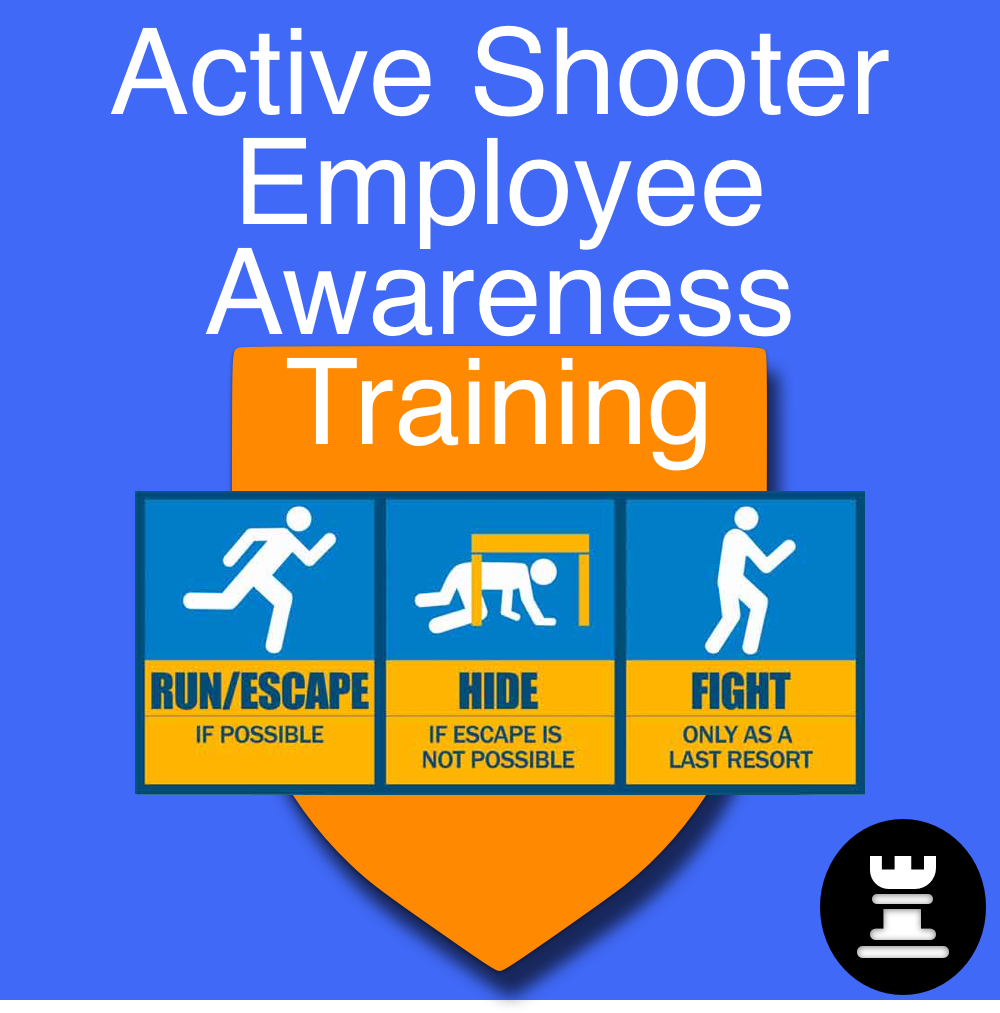Just How Active Shooter Training Enhances Emergency Reaction Preparedness
Just How Active Shooter Training Enhances Emergency Reaction Preparedness
Blog Article
Applying Energetic Shooter Training: Finest Practices for Creating a Safe and Prepared Community Atmosphere
As areas confront the disturbing reality of energetic shooter occurrences, the execution of comprehensive training programs comes to be vital. What are the crucial components that can change a basic training program right into a durable model for neighborhood durability?

Understanding the Need for Educating
In a period marked by increasing cases of physical violence in public spaces, comprehending the need for active shooter training has never been extra critical. The occurrence of mass shootings throughout numerous environmentsâEUR" such as institutions, work environments, and purchasing centersâEUR" emphasizes the urgency for people and companies to be gotten ready for such emergency situations. Active shooter scenarios can unfold rapidly, leaving little time for individuals to react properly. Thorough training efforts can outfit participants with the understanding and abilities to react emphatically.
Additionally, the emotional influence of physical violence on people and areas can not be overemphasized. Training cultivates a feeling of empowerment and readiness, making it possible for individuals to really feel even more safe and secure in their environments. It also advertises a society of safety, where recognition and vigilance become integral elements of day-to-day live. The benefits of active shooter training expand past prompt action; they consist of improving communication protocols and improving overall safety measures within organizations.
Secret Parts of Effective Programs
Effective energetic shooter training programs integrate several vital elements that enhance readiness and reaction capabilities. Initially, detailed curriculum growth is necessary, making certain that training content is pertinent, evidence-based, and tailored to the specific demands of the organization or neighborhood. This consists of understanding the characteristics of energetic shooter events and the emotional effect on people entailed.
2nd, sensible training circumstances ought to be used to simulate prospective scenarios, allowing participants to exercise decision-making and feedback strategies in a controlled setting. These drills facilitate muscle mass memory and develop self-confidence amongst participants.
Third, a concentrate on interaction methods is important. Developing clear lines of communication among legislation enforcement, emergency situation -responders, and individuals ensures collaborated feedbacks during an event. Routine updates and correspondence course help keep interaction pathways clear and reliable.
4th, ongoing examination and responses systems must be incorporated right into the training program - active shooter training. Analyzing the effectiveness of training through participant feedback and performance metrics allows for constant renovation
Last but not least, fostering a culture of security and readiness within the area encourages alertness and proactive procedures, guaranteeing that individuals are not only qualified but also taken part in maintaining a secure environment.
Engaging Area Stakeholders

To efficiently engage these stakeholders, it is essential to connect the goals and advantages of the training. Holding informational sessions can help make clear the training's objective, address issues, and lay out the functions each stakeholder may play. In find out here now addition, developing a stakeholder consultatory committee can promote recurring dialogue, permitting varied viewpoints and insights to be integrated into the training program.
Building partnerships with neighborhood leaders and companies is also essential. Their support can improve outreach initiatives, increase participation, and make certain that training is tailored to the distinct requirements of the area. Additionally, stakeholders can help in distributing details and sources, reinforcing the message of security and readiness.
Eventually, involving community stakeholders not only enhances the training campaign yet additionally cultivates a sense of possession among locals, causing a more resistant and educated neighborhood with the ability of reacting successfully to possible hazards.
Training Delivery Methods
Using a variety of training delivery approaches is necessary to suit the read the full info here varied knowing styles and demands of individuals in active shooter training programs (active shooter training). Effective training can take numerous types, including talks, hands-on simulations, on the internet modules, and interactive workshops. Each approach serves an unique objective and can improve the overall understanding experience

On the internet modules use flexibility and access, enabling participants to find out at their very own pace. These can include video clips, tests, and discussions to assess understanding. Interactive workshops urge seminar and analytical, advertising synergy and communication abilities.
Including a blended technique that combines these approaches not only improves the training experience but also guarantees that participants are much better prepared to react successfully in case of an energetic shooter circumstance (active shooter training). By resolving different discovering choices, organizations can develop an extra enlightened and receptive area
Continuous Assessment and Enhancement
Routine evaluation and enhancement of active shooter training programs are vital to keeping their importance and performance. As hazards advance, so have to the strategies and methodologies employed in training. Continual analysis makes certain that training web content mirrors the most recent knowledge on active shooter events, incorporating lessons learned from current occasions and changing for emerging trends.
To promote this procedure, companies ought to establish feedback devices that include participant evaluations, specialist evaluations, and event debriefs. Collecting information on individual performance throughout drills and workouts is necessary, as it highlights areas needing renovation and notifies look what i found future training sessions. Furthermore, engaging with regulation enforcement and emergency situation -responders can offer important understandings right into the practicality and applicability of training methods.
Regularly set up reviews of training products and methods should be mandated, cultivating an atmosphere of innovation and flexibility. Organizations should also motivate a culture of ongoing discovering, where employee feel equipped to suggest adjustments based on their experiences. By committing to constant evaluation and improvement, companies not only improve the effectiveness of their energetic shooter training programs but additionally strengthen their overall dedication to safety and security and preparedness within the area.
Conclusion
To conclude, reliable implementation of energetic shooter training demands an extensive strategy that prioritizes community interaction and realistic simulations. By developing customized educational programs, incorporating diverse training techniques, and cultivating cooperation among stakeholders, neighborhoods can improve readiness. Continuous examination and responses mechanisms are vital for adjusting programs to emerging risks, therefore reinforcing general safety and security. Inevitably, a commitment to ongoing training and improvement cultivates a society of alertness and preparedness, guaranteeing a much safer setting for all community participants.
Report this page